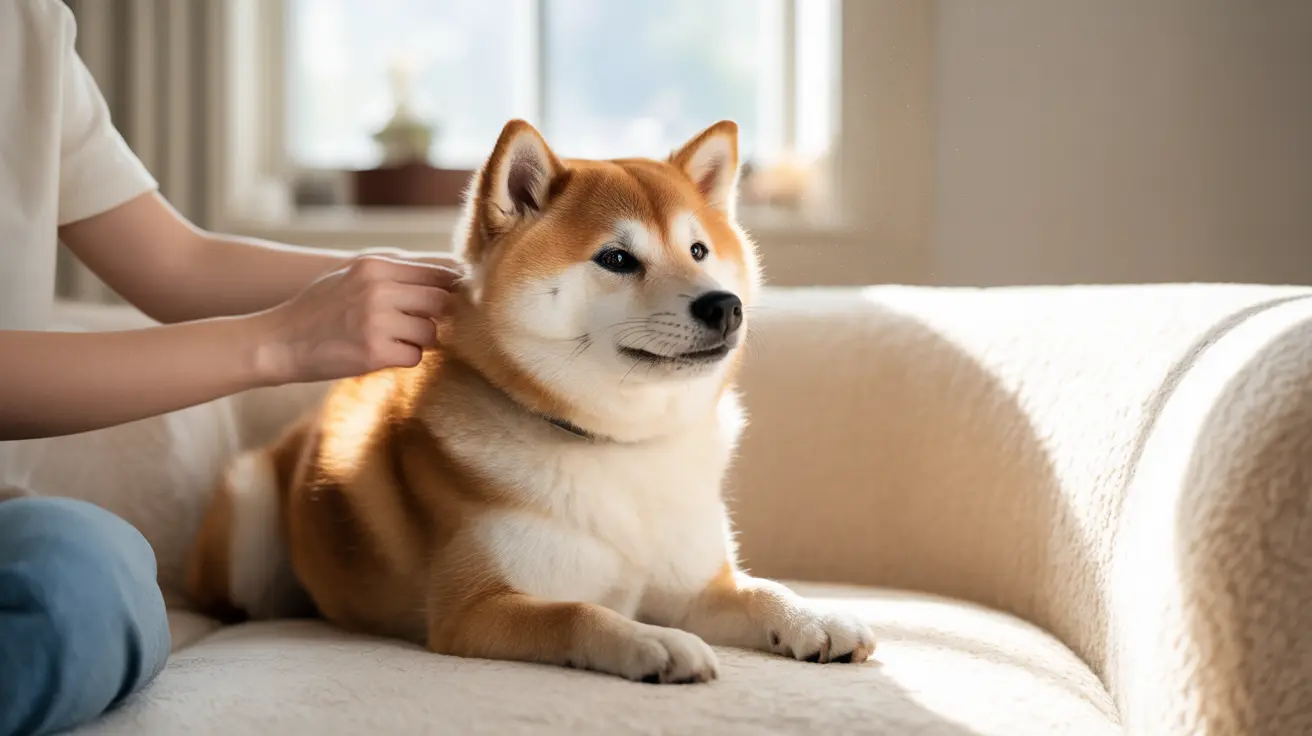When your dog growls during petting, it can be concerning and confusing for pet owners. While this behavior might seem alarming, it's actually a form of communication that deserves our attention and understanding. Dogs use growling as a way to express various emotions and physical states, from discomfort to pleasure, and learning to interpret these signals is crucial for maintaining a healthy relationship with your pet.
In this comprehensive guide, we'll explore the various reasons behind why dogs growl when petted, how to interpret different types of growls, and what steps you can take to address this behavior effectively. Understanding your dog's communication signals can help prevent escalation and ensure both you and your pet feel safe and comfortable during interactions.
Common Reasons Dogs Growl During Petting
Pain or Physical Discomfort
One of the most common reasons dogs growl when petted is underlying pain or physical discomfort. This could be due to:
- Arthritis or joint pain
- Skin conditions or infections
- Internal injuries
- Recent surgical procedures
- Age-related sensitivity
Fear and Anxiety
Dogs may growl during petting if they're experiencing fear or anxiety, particularly if they have:
- Past traumatic experiences
- Lack of proper socialization
- General anxiety disorders
- Fear of specific handling techniques
Understanding Different Types of Growls
Warning Growls
These growls are typically low and steady, indicating that the dog is uncomfortable with the current situation. They serve as a crucial communication tool, asking for space or a change in interaction.
Pleasure Growls
Some dogs emit soft, rhythmic growls during petting that actually indicate contentment. These are usually accompanied by relaxed body language and other positive signs like tail wagging or leaning into the touch.
Body Language Cues to Watch For
When your dog growls during petting, pay attention to these additional body language signals:
- Tail position and movement
- Ear positioning
- Facial expressions
- Overall body tension
- Eye contact or avoidance
How to Respond to Growling During Petting
Immediate Actions
When your dog growls while being petted:
- Stop petting immediately
- Give the dog space
- Assess the situation calmly
- Look for signs of injury or distress
Long-term Solutions
To address ongoing growling issues:
- Consult with a veterinarian to rule out medical causes
- Work with a professional dog trainer
- Practice positive reinforcement training
- Respect your dog's boundaries
Frequently Asked Questions
Why does my dog growl when I pet him—could it mean he's in pain?
Yes, growling during petting can indicate pain or discomfort. If your dog suddenly starts growling when touched in specific areas, it's important to have them checked by a veterinarian to rule out medical issues.
How can I tell if my dog's growling during petting is from fear or discomfort?
Look for additional body language cues such as cowering, tail tucking, or trying to move away. Fear-based growling is often accompanied by these submissive behaviors, while discomfort may show through more subtle signs like muscle tension.
What does it mean if my dog growls but also wags his tail when I pet him?
This combination of signals can be confusing, but tail wagging doesn't always indicate happiness. Consider the entire context and other body language signals to determine if the growling is playful or warning in nature.
Could my dog be growling because he doesn't like certain types of petting or touch?
Absolutely. Dogs, like humans, have personal preferences for how they like to be touched. Some may dislike being petted on their head, while others might be sensitive about their paws or tail being touched.
How should I respond if my dog growls when I try to pet him to avoid escalation?
Immediately stop petting and give your dog space. Never punish growling, as it's an important warning signal. Instead, respect their communication and work with a professional to address the underlying cause of the behavior.
Remember, growling is a form of communication, not necessarily aggression. By understanding and respecting your dog's signals, you can build a stronger, more trusting relationship while ensuring everyone's safety and comfort.






